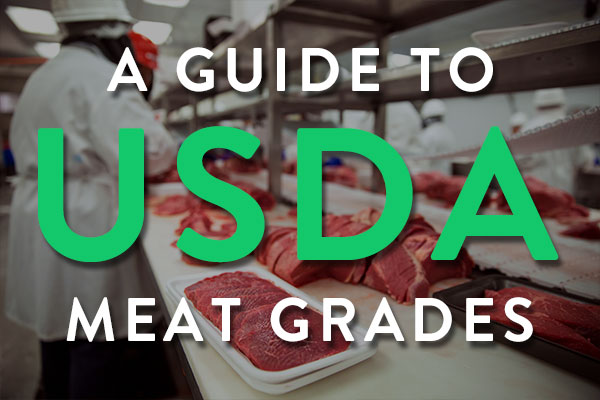
A Guide to USDA
Meat Grades

The United States Department of Agriculture (USDA) plays an integral role in ensuring the safety and quality of the country’s food.
Its main purpose is to keep our commercial supply of meat, poultry, dairy, and egg products safe for human consumption while setting national and international food standards.
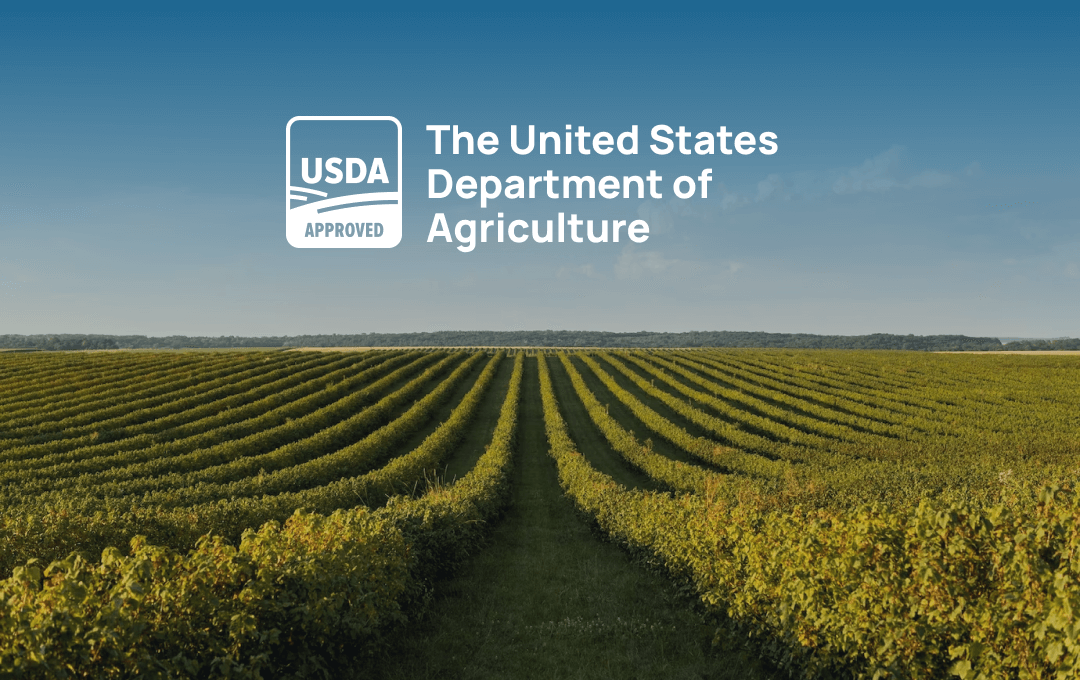
They do this by carrying out rigorous inspection processes, enforcing food safety regulations, and implementing various food safety programs. With extensive research and development, not to mention education, the USDA represents a notable part of the nation’s food safety standards.
For instance, the USDA develops new technologies to detect foodborne pathogens and improve food preservation. They also fund education programs for farmers, producers, and the public.
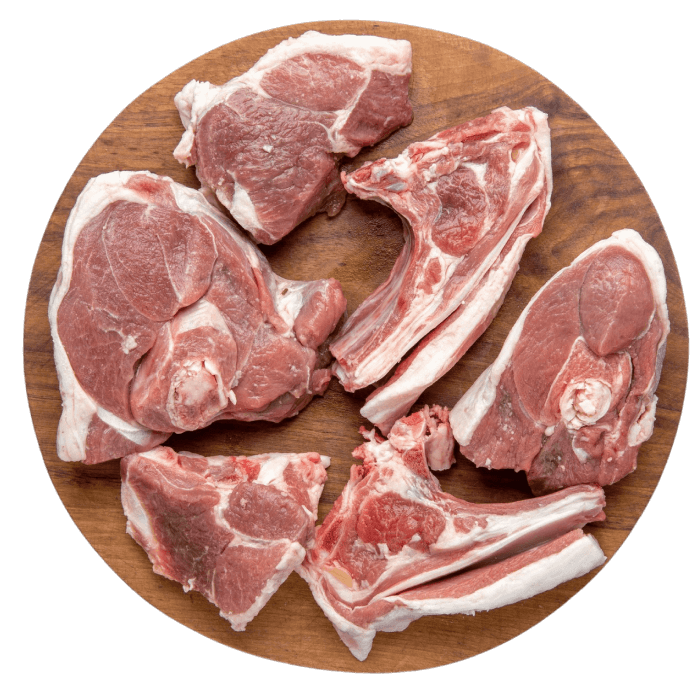



One of the USDA’s main responsibilities is to provide food grading services for meat, poultry, and eggs. This aims to give consumers a transparent idea of the quality of their food products.
The organization grades beef according to several standardized criteria, including tenderness, flavor, and origin. This helps consumers make informed choices when buying beef products.
In this guide, you’ll learn everything there is to know about how the USDA grades meat and which cuts you should buy to ensure the highest quality in your cooking.
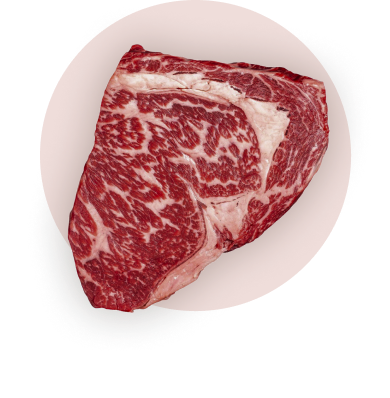
Prime
(Best)

Choice
(better)
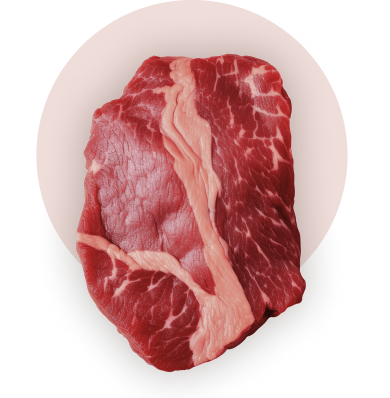
Select
(good)
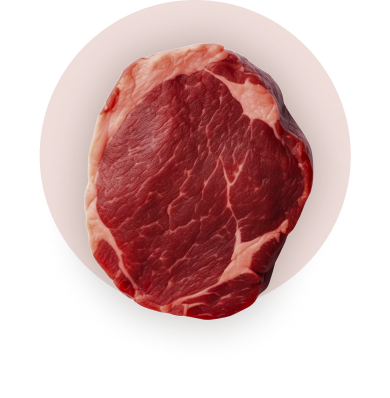
Standard &
Commercial
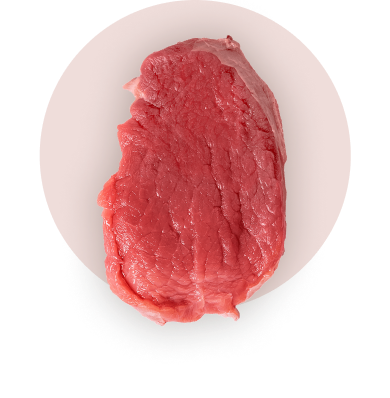
Utility, Cutter
& Canner
USDA Meat Grades
If you’re looking for the best quality meat for your home cooking, you need to know your food labels. Choosing the right cut of beef is key to getting the best, juiciest, most delicious results.
Fortunately, the USDA evaluates every cut of beef and beef product on the market and assigns it a grade. These grades demonstrate the quality of the meat, helping you find tastier cuts more easily. Each grade has a different name, so let’s dive into the meanings of each one:

Type of Different Meat Grade

When choosing your meat, pay attention to its grade. Depending on your budget, you may have to sacrifice quality for cost-effectiveness, but if you can stretch to the higher grades it’s certainly worth it. Let’s now take a look at how the USDA grades our beef.
The Grading Process
The USDA works hard to ensure that every meat product is properly evaluated. The organization employs qualified inspectors to examine the cut, carcass, and farming conditions of every cow to give accurate and reliable verdicts. This rigorous process ensures that when you buy a USDA-certified beef product, you know exactly what you’re getting.
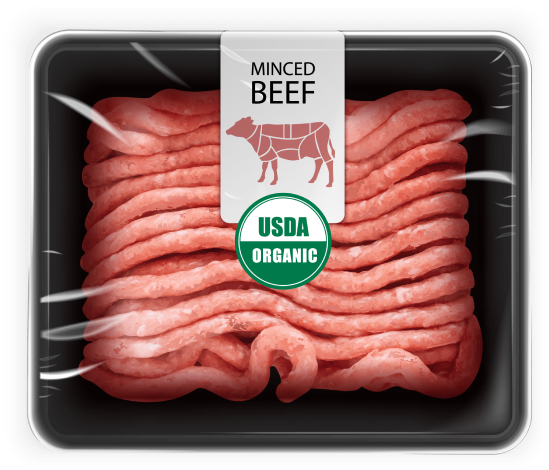
How Do USDA Inspectors Grade Meat?
First and foremost, the USDA trains inspectors using a thorough certification process to ensure they are equipped with the necessary skills and knowledge to make effective assessments. This professional training allows inspectors to determine the quality of meat with great accuracy, ensuring everything remains USDA-compliant.
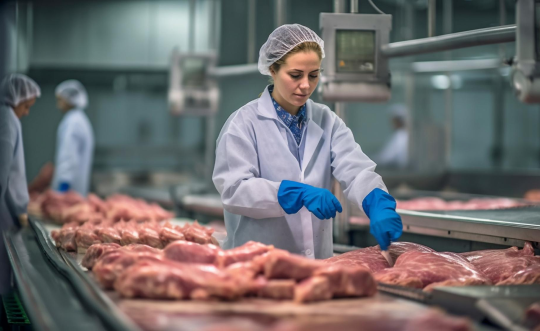

Once an inspector is fully trained, they are sent to the slaughterhouses and processing plants where the meat is produced. Here, inspectors examine the carcasses of the cattle and evaluate them according to established criteria. This step usually occurs post-mortem after the animal has been slaughtered and dressed.

During this stage, the inspector will assess the meat based on several predetermined factors. These include:
Marbling
This relates to the amount of fat interspersed with lean meat. Meat with high marbling is generally better quality. Marbling is one of the most critical factors for beef grading, as it determines the flavor, tenderness, and juiciness of the meat.

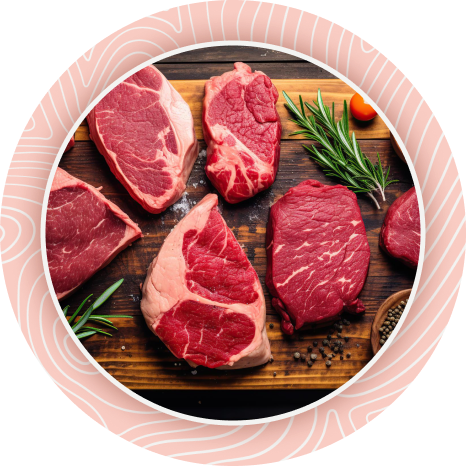
Maturity
The age of the animal also comes into play during the inspection. Higher-quality cuts are typically taken from younger cattle (up to 42 months old), while older cows usually produce lower-grade cuts.
Color
Inspectors look for a juicy red color to the meat. Grey, brown, or faded colors are generally worse in quality and flavor.
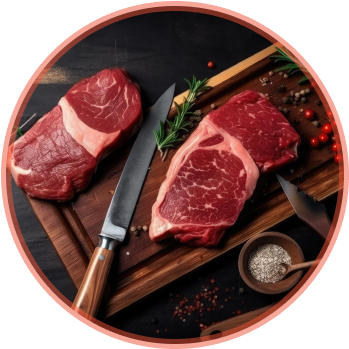
Juicy Red

Grey
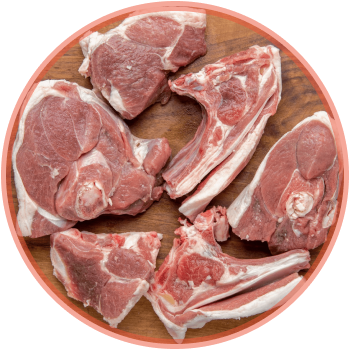
Brown

Faded
Texture
USDA inspectors also grade meat based on its texture. Soft, firm, and tender cuts perform best in the rankings.

In some cases, inspectors utilize technology to assist with the grading process. Tools like video image analysis can be used to measure the amount of marbling and give a more accurate size of the ribeye area.
This helps the grading process become more consistent and objective.

Based on meat quality USDA inspector gives the label
Based on this evaluation process, the inspector then assigns a grade to the meat. If it’s a high-quality cut, the beef may receive a Prime or Choice label, while lower-grade cuts may get a Standard or Utility label.
The inspector applies the USDA grade stamp to either the packaging or directly to the meat, which then helps consumers identify the quality of the meat when making a purchase.
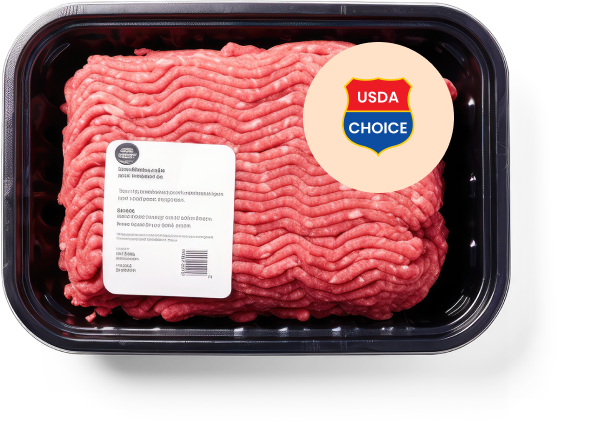
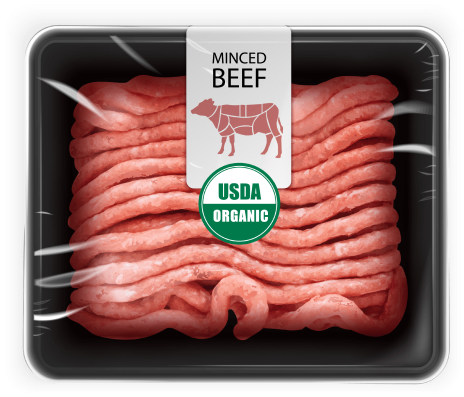
The grading process is entirely voluntary and is requested by meat processors or packers, but receiving a grade stamp will help producers sell their products. Once graded, the meat inside the packaging must accurately reflect its label.
The grading process is an ever-evolving concept. The USDA continuously monitors and reviews its approaches to ensure complete accuracy, reliability, and objectivity. This includes working independently from meat producers, scheduling periodic training updates for inspectors, and providing revisions to grading standards if necessary.
Detailed records of the grading process are kept to maximize compliance, transparency, and traceability. This keeps the farms accountable and makes it easier to track the quality of meat through the supply chain.
What Training is Required to be a USDA Inspector?
Since USDA inspectors carry a lot of responsibility, they must undergo rigorous screening and training processes. They are required to have both academic and practical experience, as well as a number of certifications in food safety and meat grading.

Here are the key skills and certifications that every USDA inspector must possess:
The job of a USDA meat grader is an ever-evolving responsibility. Once qualified, inspectors are still expected to participate in ongoing training to keep up to date with changes in grading standards, techniques, and regulations. They may also be required to retake exams and recertify themselves every few years, particularly when key changes are implemented.
Impact on Pricing
Naturally, the higher the meat quality, the higher the price. This is why USDA grades are so important, as they are not only a reliable indication of the meat’s flavor but also its price.
Higher grades like USDA Prime generally represent higher quality and more expensive cuts, while lower grades like Standard are poorer quality and thus cheaper. Customers are willing to pay more for what they believe to be a superior product, which is why the better USDA grades fetch higher prices.

Supply and demand also factors into the price of beef. This basic economic principle dictates that more abundant grades of beef, such as USDA Select, are less expensive than those that are rare and more sought-after, like USDA Prime.
USDA Prime beef is mostly sold to high-end restaurants
When a distributor receives a USDA grade, they will sell their meat to different target markets depending on the grade. For instance, USDA Prime beef is mostly sold to high-end restaurants and specialty stores in order to target wealthier customers willing to pay a premium for top-quality meat.



The Choice and Select grades are more commonly found in supermarkets
The Choice and Select grades, meanwhile, are more commonly found in supermarkets catering to everyday shoppers looking for a balance between quality and cost.

Additionally, USDA meat grades can be used as a helpful marketing tool for buyers. Restaurants and retailers can charge more by advertising that they use USDA Prime beef, as the branding implies a level of quality that justifies higher prices.

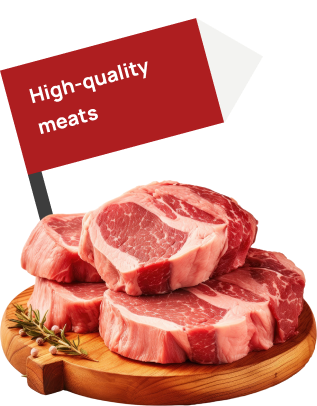
In terms of processing and distributing costs, these are often more substantial with higher-grade meats because they require a more specialized handling process to preserve their quality. These extra costs are often passed on to the customer when they buy the meat.
Of course, general economic conditions and consumer trends also impact the price of meat. The influence of USDA grades on meat prices varies between regions anyway, but general economic prosperity and increased demand for well-marbled meat may lead to a national rise in meat prices. Similarly, economic downturns may lead to a rise in stock and demand for lower USDA grades like Select and Standard.
Consumer
Considerations
As a customer, there are several things you should look out for when buying beef, regardless of whether you’re at a restaurant or you’re preparing for your next barbecue.
In this next section, we’ll cover how to identify USDA grades in stores and how to be 100% sure you’re buying the right type of meat you want.
How to Identify USDA Grades When Shopping
To ensure you’re buying the right type of beef, you need to know how to find the USDA labels. They can be printed unmissable large on the front, hidden in the product descriptions, or sometimes not even included at all. Here are a few tips to remember when buying beef at the supermarket or butcher’s:
1. Look for the USDA Grade Shield or Stamp
Meats that have been USDA-graded are labeled with a shield or stamp. The shield symbol is typically found on the packaging, while the stamp is often found directly on the meat itself. Whatever symbol you find, it should clearly state the grade, such as “USDA Prime” or “USDA Choice”.
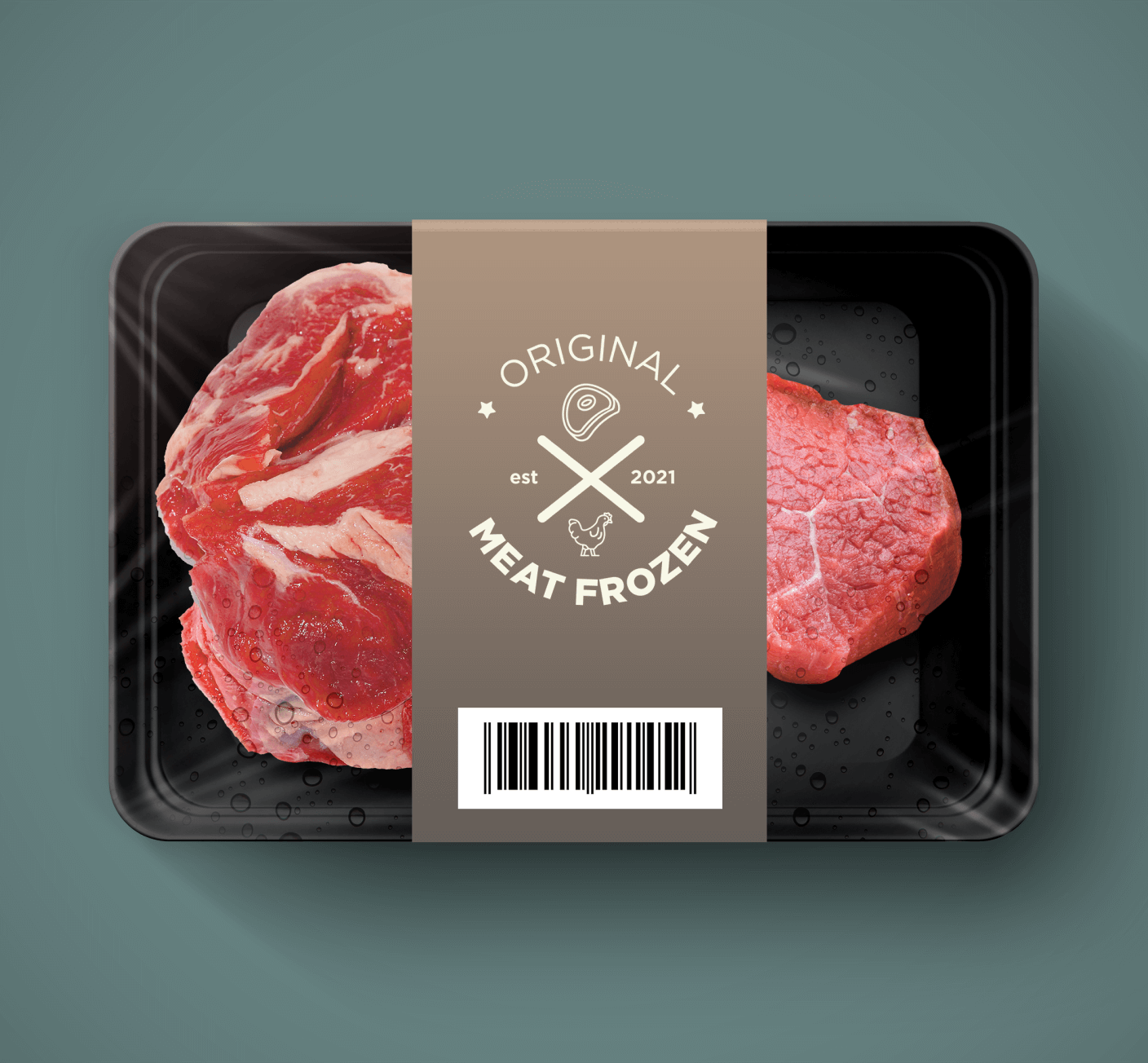
2. Check the Packaging
Supermarkets that sell beef products will normally have USDA grades on the packaging if they have been evaluated by the organization. Not all meat products are USDA-graded, so if you don’t see a grade, it may not have been assessed by the USDA.

3. Read the Product Description
Sometimes, the grade may not be included on the front of the packaging but will instead be written in the product description. If you can’t see a visible shield or stamp, read the product information to see if it’s there.

4. Ask the Butcher or Supermarket Worker
If you’re still unsure about a product’s USDA grade or you can’t find it anywhere, don’t hesitate to ask the butcher or store worker. They should be able to give you the information you need, including whether the meat was graded and what the grade is.

When buying meat online, you obviously can’t check the packaging or ask a member of staff. Instead, look at the product information. Reputable online meat sellers should clearly tell you the USDA grade in the description.

Understanding Grades and Quality Indicators

It’s important to familiarize yourself with the properties of different USDA grades to ensure you’re buying the right type of meat for your budget and cooking expectations. For instance, USDA Prime beef is the highest-quality meat and is known for its vast marbling. USDA Choice has less marbling, less flavor, and less tenderness, and USDA Select has less still.

A good working knowledge of beef marbling, maturity, and color can help you make an educated guess at a product’s USDA grade, even when it’s not labeled.
Advocating for Patronizing High-End Butchers or Specialty Meat Stores
If you don’t want to spend time familiarizing yourself with beef grades, we recommend shopping at high-end butchers or specialty meat stores. These establishments typically display the USDA Prime and Choice grades prominently, as they cater to customers seeking high-quality meats.


Ensuring Meat Quality: Beware of Deceptive Marketing Tactics
Wherever you buy your meat, take care not to get fooled by misleading marketing. Some products may use terms like “premium” and “high-quality” without indicating a USDA grade.
Words like these are unregulated and don’t necessarily reflect the actual grade of the meat.
Beyond Beef:
Grading Other Meats

The USDA grades all types of meats, not just beef. Pork and poultry are the two other key types of meat that are graded most commonly by the USDA. Like with beef, they have strict grading criteria and rigorous evaluations carried out by trained professionals. This section will explain how the USDA grades and assesses pork and poultry.


Pork Grading

Similar to beef, USDA pork grading is voluntary in the United States. Meat processors or producers will typically request USDA assessments to help increase their sales and maximize their profits. The cost of such grading is assumed by the processor.
Pork Judged on Several Factors
such as the lean meat yield (i.e., the amount of usable meat on the carcass), the fat covering, color, texture, and marbling. The USDA assigns numbers to the various grades of pork, with “USDA No. 1” being the highest, “USDA No. 2” a step down in quality, and so on. This grading system rewards a high lean meat yield.
Inspectors determine the quality of pork by examining the color and firmness of the meat. The best pork is usually pink in color, firm in texture, and has a moderate amount of marbling.
While the USDA does grade pork, it’s a lot less common to find graded pork products in retail than with beef products. Instead, you’re more likely to encounter quality indicators that use terms like “premium” and “finest” or brand-specific labels when shopping for pork.


Poultry Grading

Another type of meat assessed by the USDA is poultry. As with beef and pork, poultry grading is voluntary and usually requested by the poultry producers themselves. Again, the cost is covered by the processors rather than the USDA.
Poultry grades are designated by letters, not names.
There are no names for the different poultry grades, only letters. The best type of poultry is labeled “Grade A” and has a clean appearance, is well fleshed-out, and is free from major defects. It’s the ideal poultry for high-end restaurants and specialty stores.
“Grade B” and “Grade C” are the lower grades of poultry. They’re typically used in processed products, such as ground and breaded poultry, where the appearance of the meat is less important. They’re often cheaper but of lower quality.


Poultry grades are determined by various factors.
The grades of poultry are determined based on factors like the fleshing (i.e., the amount of meat on the bird), the fat covering, the absence of defects (such as bruises, broken bones, and feathers), and the overall cleanliness of the bird. Once graded, poultry packaging will display the USDA grade shield, much like with beef. Like pork, however, poultry grading is far less common in retail compared with beef grading.
General Considerations
The USDA grades various types of meat using fully trained professionals and an intricately established set of criteria. In general, USDA inspections are voluntary and paid for by the met producers themselves.
Check USDA grade label on beef products for desired meat type.
Grading pork and poultry is simply about meeting specific contract requirements rather than providing consumer guidance.
Meanwhile, beef grading is used as a significant marketing tool. To this end, consumers can simply check the USDA grade label on beef products to find the exact type of meat they want.


Choosing Poultry and Pork: Beyond USDA Grades
For poultry and pork, consumers must often rely on brand reputation, product presentation, and other quality indicators when choosing what to buy, as USDA grades are less frequently used in these markets.
Critiques and
Controversies
The USDA grading system is undoubtedly useful, but it’s not without its controversies. Many people have criticized the system for its subjectivity, its failure to involve nutritional considerations, and its heavy focus on marbling.
Here are the key critiques and controversies surrounding the USDA meat grading system:
For these reasons, critics have begun suggesting new ways of grading meat that better align with modern climate and health-conscious values. These alternative viewpoints hope that, in the future, the USDA may change its grading system to take the focus off marbling and prioritize animal welfare.
Alternative Grading Systems and Certifications
The limits and biases of the USDA grading system have led critics to develop new ways of evaluating meat. These are often more environmentally conscious and take into account sustainability practices, animal welfare, and nutritional values.

Here’s a list of key alternative grading methods that could integrate into or replace the USDA’s system:
1. USDA’s Organic Certification
The USDA has another certification system, the National Organic Program (NOP), that evaluates meats based on how the animals are raised. It takes into account their feed, outdoor access, and the use of antibiotics and hormones. NOP certifications are being increasingly sought after by consumers interested in ethical and sustainable farming practices.

2. Grass-Fed Labels
Grass-fed labeling is associated with better animal welfare and potentially healthier meat, as it indicates an animal has been fed on a natural diet of foraged grasses and other greens. Organizations like the American Grassfed Association provide their own certifications for grass-fed meat.

3. Animal Welfare Certifications
Certifications like the Animal Welfare Approved program and Certified Humane aim to emphasize the treatment and living conditions of animals. These programs assess farms and facilities to ensure high animal welfare standards are being met.

4. Global Animal Partnership (GAP)
GAP provides a tiered rating system for meat products based on how the animals were raised. Certain retailers, like Whole Foods, who favor sustainable and ethical practices, use this system to provide clearer pictures of animal welfare practices to their customers.

5. Local and Artisanal Grading
Some local and artisanal meat producers have created their own grading systems with different criteria that focus on specific breeds, small-scale production, and processing distance of the meat. These systems are often less standardized but appeal to customers who are interested in supporting local businesses and producers.

6. Sustainability Certifications
Sustainability certifications are becoming increasingly widespread as consumers become more environmentally conscious. These grading systems center around regenerative agriculture practices and take into account factors like soil health, biodiversity, and carbon footprint.

7. Nutritional Labeling
The USDA grading system fails to highlight the nutritional value of meat products. This has led to propositions for a shift towards labeling that shows health aspects like fat content, calorific value, and nutrient content.

8. Culinary Quality Assessments
Restaurants and chefs sometimes use their own quality assessment criteria. These typically focus on taste, texture, and cooking performance rather than traditional factors like marbling and color.

These alternative systems aim to address issues within the USDA’s current approach to meat grading. Critics hope that in the future, the USDA will adjust their grading system to incorporate a greater focus on animal welfare, sustainable practices, and nutritional values.
The Future of Meat
Grading
Organizations like the USDA will likely change their approaches to meat grading in the future. Shifting attitudes towards health and sustainability will prompt graders to place more emphasis on the nutritional content and farming standards of meat products.
Future Grading Standards Embrace Sustainable and Ethical Practices”

Animal Welfare

Farming Practices

Carbon Footprint
Sustainable and ethical practices will occupy a more central role in future grading standards. Factors like animal welfare, farming practices, carbon footprint, and the use of antibiotics or hormones are becoming increasingly important to consumers, potentially leading to the development of new grading standards that incorporate these concepts.
Advancing Grading Systems: Enhancing Nutritional Transparency for Informed Consumer Choices”

Similarly, health and nutritional values are also likely to garner greater attention within grading systems in the future. Approaches to grading may develop to include indications of fat content, beneficial compounds like omega-3 fatty acids, and the overall nutritional profile. This would provide consumers with more comprehensive dietary and health information.

Grading systems may even develop more customized approaches. Advancements in technology may lead to the creation of specialist grading systems that cater to specific market segments, such as grass-fed or breed-specific qualities.
Even with a potential increase in specialized grading systems, there will likely be a wider standardization and harmonization of meat grading in the future. This will ensure the widespread quality of meat products and could even facilitate trade across borders.

The Role of Technology in Meat Grading of the Future
As technology advances, so too does the approach to meat grading. New facilities and better tools allow inspectors to more accurately and objectively grade the meat, leading to improved consistency, transparency, and trust across the board.
Here are some technologies that could be more widely employed in grading methods in the future and how they can benefit the process:
New technologies may help resolve the most pressing issues in the current USDA grading system, such as objectivity, accuracy, and inefficiency. Advancements in technology could also be used to educate consumers about meat quality and grading standards, possibly through interactive or digital platforms.
Conclusion

The United States Department of Agriculture implements several strategies to ensure the quality and safety of our food. One of these methods is their meat grading system, primarily used for beef, which assigns labels to different beef products based on their quality, flavor, tenderness, color, texture, and marbling.


Prime
(Best)

Choice
(better)

Select
(good)

Standard &
Commercial

Utility, Cutter
& Canner
Of these grades, USDA Prime is the best and is most commonly found in high-end restaurants and specialty retailers. USDA Choice is the next one down, followed by USDA Select, which are still good-quality cuts but found in supermarkets and meat retailers, as well as restaurants. USDA Standard and Commercial are common in low-end supermarkets, while USDA Utility, Cutter, and Canner are typically utilized in processed products.
The USDA meat grading system is well-established and performed by fully trained professionals, but it’s not without its criticisms.
In the future, grading systems may shift to incorporate criteria like animal welfare and sustainable practices, but for now, customers can use the USDA grades as a sign of general quality.



If you’re after the best beef to sit and sizzle on your grill, make sure you look for the USDA shields or stamps. After all, your high-quality grill deserves a high-quality beef cut!

What are the 4 USDA grades of meat?
- Prime
- Choice
- Select
- Standard
What is the highest quality meat by the USDA?
The USDA’s highest quality grade for meat is Prime, which is typically the most tender, juicy, and flavorful.
Who grades meat quality?
Meat quality is typically graded by trained professionals in the meat industry, such as butchers, meat inspectors, or quality control experts. Grades are often based on factors such as marbling, color, texture, and overall appearance of the meat.
How do you determine the grade of meat?
You can determine the grade of meat by looking at factors such as marbling, color, and texture. The higher the marbling (intramuscular fat), the better the grade of beef. Color can also indicate freshness and quality, with bright red being preferred. The texture should be firm to the touch. There are also grading labels from organizations like the USDA that can help consumers understand the quality of the meat they are purchasing.
What is marbling, and why is it important?
Marbling is the intramuscular fat found in meat, creating a marbled appearance. It is important in meat quality because it adds flavor, juiciness, and tenderness to the meat. Higher marbling content is often associated with higher-quality meat.
Is all beef graded?
No, not all beef is graded. Beef grading is a voluntary process in the United States that the USDA does to assess quality and consistency based on factors like the marbling and maturity of the beef. Only beef that has been officially graded will have a USDA grade stamp on the packaging.
What does beef grade not tell you?
Beef grade does not tell you about the specific taste or flavor profile of the beef, the specific farming practices used, or the overall quality of the meat beyond the grading system.
What are the problems with the USDA grades of meat?
Some problems with USDA meat grades include subjective grading criteria, inconsistencies in grading, and the potential for misleading consumers about the quality of the meat they are purchasing. Additionally, some argue that the grading system does not take into account factors like animal welfare standards or environmental sustainability.














